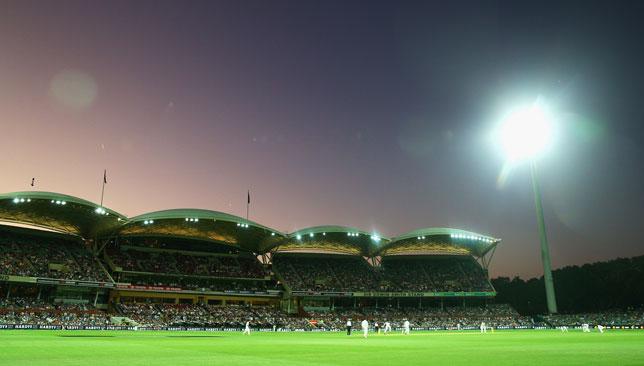
My only regret about the first ever day-night Test was that it ended within three days.
Of course night cricket is not new or novel. Kerry Packer introduced it in early 1978, and for more than three decades limited overs cricket has largely consisted of floodlit affairs. And yet, for the longest format of the sport to be played under lights was cathartic.
Even five years back, the mere thought would have caused convulsions in the conservatives among the followers of the game; that a Test match would be played with a pink ball would have been anathema.
– #360view: England gained a lot from their UAE trip
– FEATURE: PAK-ENG finally coming to terms with T20
– Inside Story: KP’s perfect pitch for a worthy cause
– FOLLOW: Live cricket scores from around the world
But let’s face it, Test cricket is facing hard times. And it has done for a few decades now.
Something needed to be done, and urgently. In fact former Australia captain Ian Chappell wondered why the authorities had slept over the transition from day-night cricket in ODIs to Tests once the experiment had been a success. He has a point for which there are no cogent answers.
However late it was in coming though, the first day-night match captured the imagination of people all over the cricket universe. Could this concept work, was it is feasible, does it have the buy-in of players?
The last mentioned was a crucial question. There were several players – with the Aussies at the forefront — who questioned the idea, particularly of playing with a pink ball with a depressed seam.
I gathered that the Kiwis weren’t too excited either to be the guinea pigs for the experiment. But kudos are due to the ICC, the MCC and the cricket boards of the two countries for making this Test possible, even if it meant putting up a million-dollar booty for the contest. (This was 60-40 in favour of the winners, 50-50 in case of a draw).
But all this did not detract any from the excitement and flavour of the Test. The weather in Adelaide – my favourite city Down Under — was salubrious and everybody knows how passionate people are for sport in Australia.
The spectator response was fantastic, and the contest between the two teams had been so keen that it almost seemed a travesty that the match should finish so prematurely.
Of course, there are no guarantees in sport, and I would much rather have a Test match which produces a result in three days than a dull and dreary draw played out over five that leaves everybody bored to tears.
Indeed, after the run glut at Perth in the second Test of the series, not just administrators but also fans of both Australia and New Zealand would surely have been looking for a match that delivers a result.
One of these teams had to lose, and unfortunately for them, this happened to be New Zealand. But McCullum and Co were hardly disgraced. Indeed, with a little luck – not least THAT DRS review – they might have won and squared the series.
The fact that the day-night Test ended in three days invited some comparisons with the third Test at Nagpur between India and South Africa, which also ended in less than nine full sessions.
But apart from the similarity in the time taken for both these matches to finish, there were few other parallels. The Adelaide Test was a humdinger; at Nagpur it was a one-sided contest in a series full of them.
Slice of history: Mitch Starc bowls the first delivery with a pink ball in a Test match pic.twitter.com/vgMrRenF1Q
— Cricketwallah (@cricketwallah) November 27, 2015
In the day-night match, while the balance was skewed in favour of bowlers, both pace bowlers and spinners had a role to play; in the Nagpur dustbowl, spinners were on top right from the off.
For the day-night Test, one question has lingered; Was it’s success a one-off, driven by curiosity and passion or is it a sustainable model? Indeed, does the five-day format still have a future, night-cricket or not?
The issue is far too complex for anybody to believe that all hurdles have been jumped, all challenges quelled, that Test cricket has regained its pristine position after these three days in floodlights and with a pink ball as a prop.
As the `newness’ of the first-ever day-night Test starts to wear off, several issues emerge. Financial feasibility will be a concern in several countries; playing under floodlights for five-days is not cheap. And for countries like Zimbabwe, Sri Lanka, Pakistan and Bangladesh, that is an issue.
There is also the `dew factor’ to be considered in the Indian sub-continent, and the `daylight’ factor in England – when the sun sets very late in summer – as former Hampshire captain Mark Nicholas mentioned to me.
Nicholas, however, also posed the pertinent question: “Does Test cricket have a choice?” I dare say not. But what I can aver, after much mulling, is that unless India, which provides 75 percent of the eyeballs and revenue, takes to it, day-night Test cricket may not be the panacea everybody thinks it is.
That is why it concerns me that the one man who should have been in Adelaide was missing: BCCI president and ICC chairman Shashank Manohar.